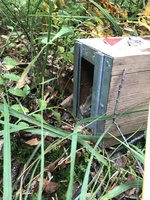Important research on zoonotic viruses published by the MUG scientists
23.07.2019
Maciej Grzybek, Ph.D. and Beata Biernat, Ph.D., D.Sc. from the Tropical Parasitology Department at the MUG co-authored a paper entitled „Zoonotic Virus Seroprevalence among Bank Voles, Poland, 2002-2010”, which was published in the prestigious „Emerging Infectious Diseases” journal, issued by the Center for Disease Control and Prevention, USA (Impact Factor = 7.42). The research was conducted under an international PolVole Project – long term biomonitoring of bank voles from N.E. Poland” coordinated by Maciej Grzybek, Ph.D. on bahalf of the MUG.
Establishing cooperation with the Department of Virology at the University of Helsinki allowed the researchers to carry out a seron monitoring of zoonotic viruses in bank voles (Myodes glareolus) in Poland. Bank voles are one of the most wide spread rodent species in Polish and European forests. .
Rodents are known to be reservoirs of zoonotic viruses and therefore, play a significant role in the dissemination of these pathogens. Using immunofluorescence assays (IFA), the team carried out the first long-term seromonitoring programme for hantavirus (PUUV), arenavirus (LCMV) and cowpox virus (CPXV) infections in bank voles from three ecologically similar, but separate, sites in NE Poland. Authors screened for three viral species and detected antibodies against all three: PUUV, CPXV and LCMV. The overall seroprevalence of combined viral infections was 25.9% [23.0-29.1] and was mostly attributed to CPXV. Only 2 cases of LCMV were detected (0.3% [0.2-0.9]), and only 5 of PUUV (0.76% [0.4-1.6]). The seroprevalence of CPXV varied significantly between sites, years in which the surveys were undertaken, host sexes (higher in male voles) and age classes (highest in the older animals). There were also significant interactions reflecting different rates of increase in seroprevalence across the study period in the three study sites and variation between study sites in the age-related pattern of prevalence.
Presented results, therefore, make a significant contribution to the understanding of the role of wild bank vole populations in the maintenance and dissemination of these viral pathogens and identify key factors that affect the magnitude of seroprevalence in specific host populations.
Archives
- Academic Year 2024/2025
- Academic Year 2023/2024
- Academic Year 2022/2023
- Academic Year 2021/2022
- Academic Year 2020/2021
- Academic Year 2019/2020
- Academic Year 2018/2019
- Academic Year 2017/2018
- Academic Year 2016/2017
- Academic Year 2015/2016
- Academic Year 2014/2015
- Academic Year 2013/2014
- Academic Year 2012/2013


